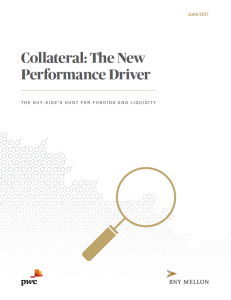
Collateral: The New Performance Driver
Posted on 08/29/2017
This article is sponsored by BNY Mellon.
In 2017, the global buy-side community faces considerable liquidity and funding pressures, stemming from market and regulatory reforms that are causing disruption. As a result, access to high-quality collateral, funding and liquidity is not only a pressing concern but has emerged as the essential new performance driver for the buy-side.
This disruption is the result of two opposing forces. Stringent regulatory requirements are forcing market participants to seek collateral — generally of high quality — in order to secure trading exposures. At the same time, the sell-side — or dealer-sponsored financial plumbing used to supply liquidity and collateral to the market — is experiencing challenges due to Basel III capital and liquidity constraints.
A major concern among multiple buy-side firms is that the next market-stress event will occur not because of a lack of collateral in the financial system but rather due to the inaccessibility of this collateral.¹ This scenario is forcing firms to reevaluate their collateralized trading portfolios, recalibrate asset allocation strategies and in some cases review the investment products offered to end clients.
This paper presents the findings from BNY Mellon–PwC outreach to senior buy-side executives from over 120 global firms conducted during the first quarter of 2017. It provides insights on demand-supply imbalances that are being experienced by buyside firms and the possible solutions they are exploring in response to fears that ready access to liquidity and high-quality collateral may become scarce in the years ahead.
The picture that emerged from these discussions was one of a buy-side community both grappling to adjust to its new collateralized trading obligations as well as striving to secure access to sustainable sources of funding and liquidity.
To read the full study please click here.

1. Collateral can be inaccessible due to decreasing velocity of collateral, which indicates how much, on average, a single dollar of collateral is reused over a period of time. This is analogous to the concept of “velocity of money.”
